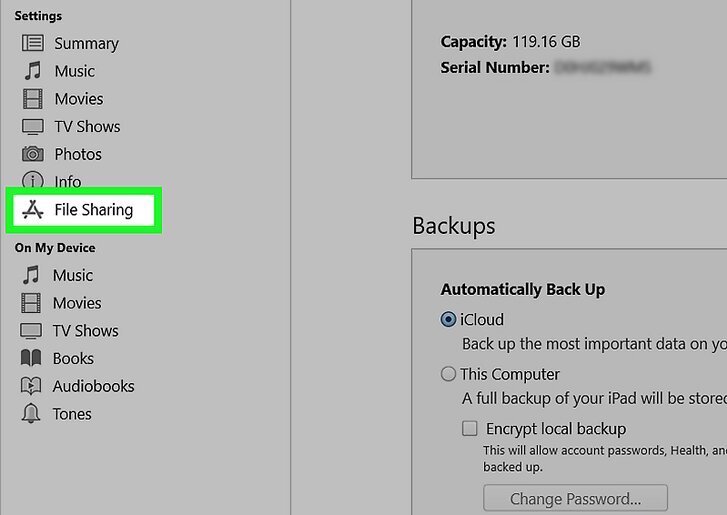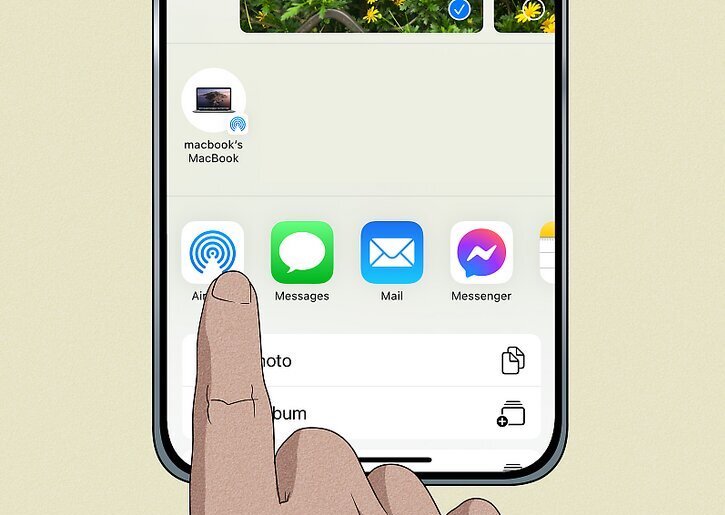This guide explains how to move files from your iPhone to your Windows or Mac computer. You can transfer a variety of data, including images, videos, notes, contacts, and more.
How to Transfer Files from Your iPhone to Your Computer
There are two main methods: wirelessly or using a USB cable.
Wireless Transfer
- Upload your files to a cloud service like Google Drive.
- Download the files from the cloud service to your computer.
USB Cable Transfer
- Connect your iPhone to your computer using a USB cable.
- Use your computer’s file transfer software to move the files.
For transferring large files, it’s recommended to use a cloud service to ensure a smooth process.
Method 1: Transferring Files from iPhone to Mac via AirDrop

- Enable Wi-Fi and Bluetooth. Ensure both your iPhone and Mac have Wi-Fi and Bluetooth turned on. For successful file transfers, both devices need to be within 30 feet of each other.
- Activate AirDrop on Your Mac
- Click the Control Center icon (two switches) in your Mac’s menu bar.
- Click the AirDrop icon (a circle with multiple curved open circles radiating from it) so it turns blue.
- This action should automatically make your Mac discoverable via AirDrop.
- To confirm, click the Go menu, select AirDrop, and then choose Contacts Only or Everyone.
- Activate AirDrop on Your iPhone
- Open Control Center by swiping down from the upper-right corner of the screen (or swiping up if you have an iPhone SE).
- Tap the AirDrop icon, ensuring it turns blue to indicate AirDrop is enabled.
- Select the File on Your iPhone. Open the desired file (photo, document, etc.) that you wish to transfer.
- Initiate Sharing. Tap the sharing icon (a square with an upward arrow). In some apps, you might directly see the AirDrop icon or the word Share.
- Select AirDrop. Nearby devices with AirDrop enabled will appear. Select your Mac and tap Done.
- Accept the Transfer on Your Mac. A notification will appear on your Mac. Click Accept to complete the transfer.
Method 2: Transferring Files from iPhone to Windows PC via iTunes

- Open iTunes on Your Windows PC. Download and install iTunes from the Microsoft Store if you don’t have it yet.
- Connect Your iPhone to Your Computer. Use your iPhone’s cable to connect it to a USB port on your PC.
- When prompted, tap Allow or Trust on your iPhone’s screen.
- Select Your iPhone in iTunes. Click the iPhone icon at the top of the iTunes window.
- Access File Sharing Click File Sharing to start moving files from your iPhone to your computer.
- Choose the App for File Transfer. Select the desired app from the list on the left panel (note that not all apps are supported).
- Select the File You Want to Transfer. Choose the file you want to transfer from the list on the right.
- Save the File to Your Computer. Click Save to and choose a location on your computer where you want to store the file.
- Click Save to again to start the transfer.
Method 3: Transferring Files from Any Phone to Any Computer

- Open the Google Drive App
- On your iPhone or Android, open the Google Drive app to transfer large files or access them wirelessly on any platform.
- Ensure you’re logged in with your Google account.
- You can also use other cloud services like Dropbox or iCloud Drive.
- For iCloud Drive, visit https://icloud.com/iclouddrive in your phone’s web browser and log in with your Apple account.
- Upload Files to Google Drive
- Tap the + icon at the bottom-right corner of Google Drive.
- If you’re using iCloud, tap the cloud icon with an upward arrow, then select Choose Files or Photo Library for photos.
- Select and Upload Files
- Choose the files you want to upload. This will transfer the files to the cloud.
- Access Google Drive on Your Computer
- Go to https://drive.google.com on your computer’s web browser.
- Click Sign in and log in with your Google account.
- If you’re using iCloud, log in to https://www.icloud.com and click Drive.
- Download Files to Your Computer
- If you uploaded multiple files, select each file you want to download in Google Drive.
- Click the download icon (an arrow pointing down over a line).
- When prompted, click Save to download the selected files to your computer.
